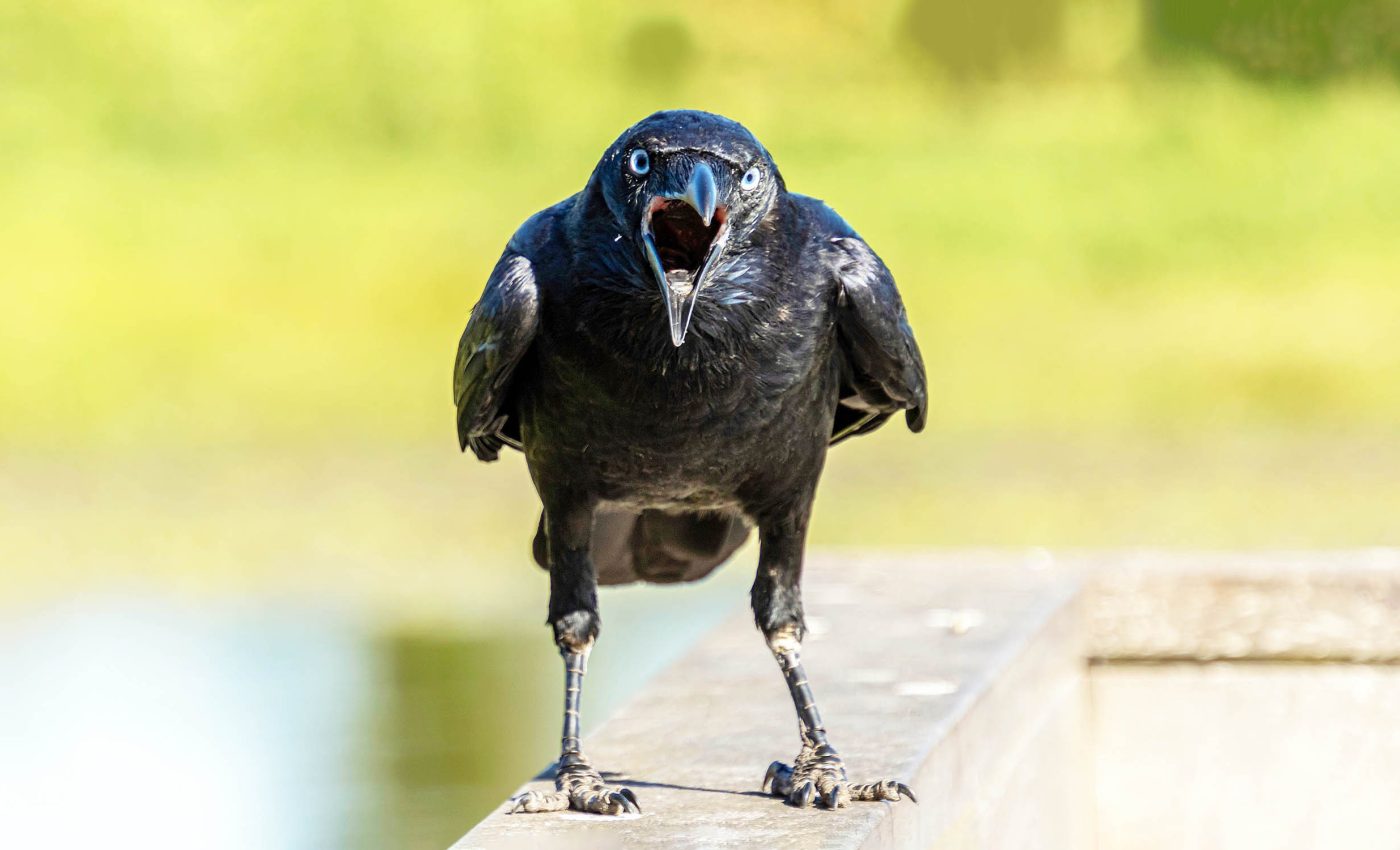
Crows hold grudges against individual humans, often attacking, for up to 17 years
Crows are more than just black-feathered figures cawing from treetops; they are masters of memory and grudges, with cognitive abilities that defy our expectations.
While we often admire birds for their bright plumage and lilting songs, there is a deeper layer to their behavior that remains unseen.
Birds are more intelligent than most people realize, especially when it comes to recalling those who pose a threat.
Recent research has illuminated this startling dimension of avian behavior, revealing that crows — members of the avian elite — can hold grudges for up to 17 years.
This discovery showcases the profound capacity of the crows’ memories. The study also sheds light on the social transmission of knowledge about threats within bird communities.
Studying crows and grudges
The research project, led by experts at the University of Washington, was launched in 2006.
Professor John Marzluff, an environmental scientist, initiated the study by donning a fearsome mask and temporarily trapping seven crows. He identified them with leg rings before their safe release.
In subsequent years, the professor and his assistants sporadically wore the same mask — strolling the university campus while feeding the resident crows.
Marzluff recalled an incident while wearing the mask when 47 out of 53 crows he encountered vehemently scolded him.
This was a substantial increase from the original seven crows that were captured, suggesting that these birds could recognize threatening humans and pass on this knowledge to their kin.
The sound of silence
The climax of this fascinating study came in 2013 when the number of aggressive caws reached their peak, only to gradually decrease.
By September 2023 — 17 years since the experiment began — not a single scolding crow was heard on one of Marzluff’s masked walks.
Seeing behind the mask
Another intriguing facet of the study involved the use of a “neutral” mask, bearing the likeness of Dick Cheney, who was the vice president of the United States at the time.
Those sporting the Cheney mask fed the crows without causing them any distress, and were subsequently spared of avian wrath.
As the research progressed, unknowing volunteers were roped in to wearing the masks, ignorant of the “dangerous” or “neutral” categorization by the crows.
One such volunteer found himself at the center of an avian uproar, confirming the crows’ skill in discerning and remembering threats.
Dive-bombing attacks by crows
A report published in Mail Online shares some other instances of crows with a grudge. In Dulwich, a posh London suburb, residents reported instances of crows executing dive-bombing attacks.
One resident, Alison Frean, shared her harrowing experience, revealing that she had been targeted by crows on three separate occasions when trying to exit her car.
This had a profound impact on the residents, as they chose to stay indoors, attempting to avoid any crow confrontations.
Intelligence of crows
Crows never cease to amaze with their incredible intelligence, and it isn’t confined to recognizing threats and holding grudges.
Prior research indicates that crows possess the talent to devise tools and even count.
Stories abound of crows dropping nuts onto busy roads, waiting for cars to crack them open, and then retrieving the food once the traffic stops.
Some crows have even figured out how to use sticks to extract insects from tree bark or fashion hooks from twigs to fish out food from hard-to-reach places.
The study from the University of Washington undeniably contributes to affirming the crows’ place in the intelligence hierarchy among birds.
Crows, it appears, are creatures of memory, holding on to grudges and recalling threats even after a lengthy span of 17 years.
Social dynamics of crow behavior
Beyond their impressive memory and intelligence, crows exhibit complex social structures that further highlight their cognitive sophistication.
They live in tight-knit family groups and exhibit behaviors that suggest complex emotional lives.
For instance, they’ve been observed holding what appear to be “funerals” for deceased members of their flock.
Their communication is sophisticated, involving a range of vocalizations and even regional dialects.
This communication is not limited to warnings about potential threats; crows have been observed sharing information about food sources and even forming alliances to fend off predators.
Animals and cultural transmission
One of the most remarkable aspects of crow behavior is their ability to teach one another.
When a crow learns to associate a specific individual or object with danger, it can relay this information to others in its community, spreading awareness rapidly.
Communal learning helps ensure that knowledge of potential threats is preserved and passed down, allowing even young crows to recognize dangers without firsthand experience.
This intricate network of social interactions places crows among the few non-human animals capable of cultural transmission — passing knowledge from one generation to the next.
It is no surprise that these birds are revered in many cultures, often viewed as symbols of intelligence and adaptability.
The full study was published in the Proceedings of the Royal Society B.
—–
Like what you read? Subscribe to our newsletter for engaging articles, exclusive content, and the latest updates.
Check us out on EarthSnap, a free app brought to you by Eric Ralls and Earth.com.
—–













